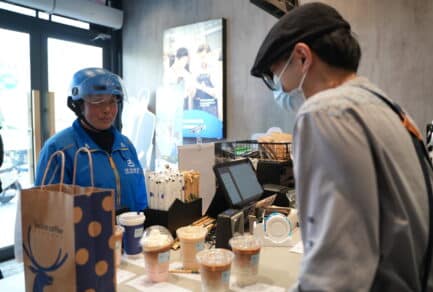Mar 8, 2023|
JD.com’s Data Reveals Women’s Consumption Trends: Inner-Beauty, Self-Realization and Sustainability
by Vivian Yang
JD.com’s Consumption and Industry Development Research Institute released the 2022 Female Consumption Report in conjunction with International Women’s Day on March 8, revealing a host of trends related to women’s shopping preferences for better health, self-realization and sustainability.
Consumption data showed that the spending growth rate of the so-called “She Power” on JD.com exceeded males’ by 5.51 percent in the past year. Some key data and findings include:
- The consumption growth rate of personal care products increased significantly among female shoppers on JD.com in 2022, outpacing that of the beauty category. Although fewer social interactions due to COVID-19 partly contributed to this result, the contrast showed female users’ growing pursuit for their own care and interests.
- Women are leading the way in healthy eating. They bought 2.49 times more organic food products than men on JD.com in 2022. In general, women are stronger buyers of fresh produce. JD’s data showed that sales of vegetables increased 81 percent YoY, and that of low-temperature milk grew 54 percent. Grapes, cherries, blueberries, and other fruits all achieved over 40 percent growth. Healthy-scented and fruit tea, and fruit wines are also popular choices among women.
- In the same vein, female users bought an increasing amount of inner-beauty-building products such as antioxidant astaxanthin and collagen products, which saw 63 percent and 49 percent sales growth respectively YoY. Meanwhile, the transaction volume of immune-enhancing health products such as amino acids and protein powder increased by 42 percent and the growth rate of vitamin/mineral health products rose by more than 50 percent.
- Female users’ spending on education and training-related products on JD.com increased nearly 30 percent YoY, with remarkable growth rates being seen on training courses for arts (8.18 times), investment and finance (2.56 times) and postgraduate entrance examination (2.71 times).
- Women also spent 1.43 times more than men on fitness and outdoor gear. Their overall expenditures on outdoor, fitness, cycling, swimming, yoga, and roller skating products account for 88.72 percent in this category.
- Psychological health is of equal importance when it comes to women’s preferred consumption. JD Health’s data showed that female users spent more on its platform on services related to personal emotional management (17.5 times), workplace psychological counseling (16.2 times), and marriage counseling (5.6 times) compared with 2021.
- The report also pointed out that women play a leading role in many households in driving sustainable consumption. They showed a stronger preference for energy-saving, recyclable, and trade-in products, especially when shopping for home appliances, decorations and furniture.
Read more about JD.com’s observation and efforts on women’s role in driving sustainable and inclusive development.




 JD Auto to Make Moto3 Debut with CFMOTO
JD Auto to Make Moto3 Debut with CFMOTO



